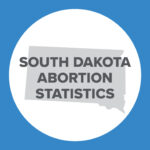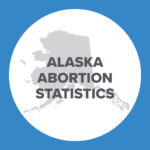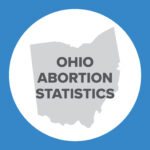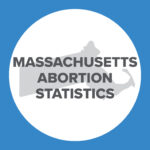Abortion Reporting: Delaware (2021)
Delaware’s 2021 abortion report was published online by the Delaware Department of Health and Social Services. The report shows that abortions decreased in 2021 from 2020.
Statistics and Changes in Delaware Abortions, 2020-2021

The report does not include information on Planned Parenthood’s Delaware abortion market share.
Abortion Totals and Trends
There were 1,825 abortions reported in Delaware in 2021, a decrease of 20% from 2020. Chemical abortions also decreased, dropping by 18% to 1,223 in 2021, and making up 67% of all abortions reported in Delaware (Fig. 1). The Charlotte Lozier Institute (CLI) estimates that Delaware’s abortion rate was 9.8 abortions per 1,000 women ages 15 to 44, down 21% from the previous year (Fig. 2).1 As of October 2023, 39 states have released 2021 abortion statistics, of which 12 showed that abortions had decreased from 2020.
State Report Summary
In 2021, 91% of Delaware abortions were performed on state residents. Three percent each were performed on Maryland and Pennsylvania women, 2% on New Jersey women, and less than 1% on women from other states.
Eight percent of abortions reported in Delaware were performed on girls younger than age 20, a significant decrease from 2020. This included 3% on girls under the age of 18. Thirty percent of the abortions were on women in their early twenties, and 26% on women in their later twenties. Thirty-two percent of the abortions were obtained by women ages 30 to 39, and 4% obtained by women ages 40 and older.
Just over half of Delaware abortions (51%) were performed on black women, even though black women composed just 27% of Delaware women ages 15 to 44. Forty-five percent of the abortions were performed on white women, 2% on Asian women, 0.3% (six) on American Indian women, and 2% on women of other races. CLI estimates that Delaware’s black abortion rate was 18.1 abortions per 1,000 women of childbearing age, over two and a half times the white abortion rate of 7.0. Fifteen percent of the abortions were performed on Hispanic women, and 85%on non-Hispanic women.
Eight percent of Delaware abortions were obtained by women who had not graduated from high school, 54% percent by high school graduates, and 22% by women who had completed one to three years of college. Not quite 11% of the abortions were performed on women with four or more years of college. Education was not reported for 5% of abortions.
Twelve percent of the abortions reported in 2021 were on married women, and 88% were on unmarried women. Seventy-two percent of the abortions were performed on women who had previous pregnancies, while 27% were on women with had no previous pregnancies. Thirty-nine percent of the abortions were obtained by women with no previous live births, compared to just over a quarter (26%) on women with one live birth and just over one third (35%) on women with two or more live births. Sixty percent of the abortions were on women who reported zero prior abortions. Twenty-four percent were performed on women with one prior abortion and 16% were on women with more than one previous abortion.
A majority of the abortions reported in Delaware (67%) were chemical, and 32% were suction curettage procedures. There were three other unspecified abortion procedures in 2021, while the type of procedure was not reported for 12 of the abortions. Twenty-three percent of the abortions occurred earlier than seven weeks of gestation (approximately five weeks post-fertilization), and 37% were performed between seven and eight weeks. Twenty-one percent were reported between nine and 10 weeks, 10% between 11 and 12 weeks, and 5% from 13 to 15 weeks of gestation. One percent were performed between 16 and 20 weeks. There were eleven abortions (0.6%) at 21 weeks of gestation or later, and 25 abortions performed at unknown gestational time periods.
Legislative Changes
Following the overturn of Roe v. Wade in June 2022, the abortion laws in Delaware did not change. The state has no effective gestational limits as its law limiting abortion at viability contains such broad health exceptions that the law is not a meaningful restriction. As CLI has previously noted, Delaware passed a “shield law” shortly after the Dobbs decision in June 2022 to prevent pro-life states from prosecuting Delaware abortion providers who ship abortion pills into other states. During the same time period, Delaware also passed legislation that expanded who could perform medication abortions in the state to include physician assistants, nurse midwives, and nurse practitioners.
State Ranking
In CLI’s 2016 paper on abortion reporting across the United States, Delaware’s reporting was tied for 36th best. Since Delaware abortion centers have operated in unsafe conditions in the past, Delaware could improve its reporting by collecting and reporting data on complications resulting from abortion. Delaware could also report the percentage of abortions performed at each facility in the state.
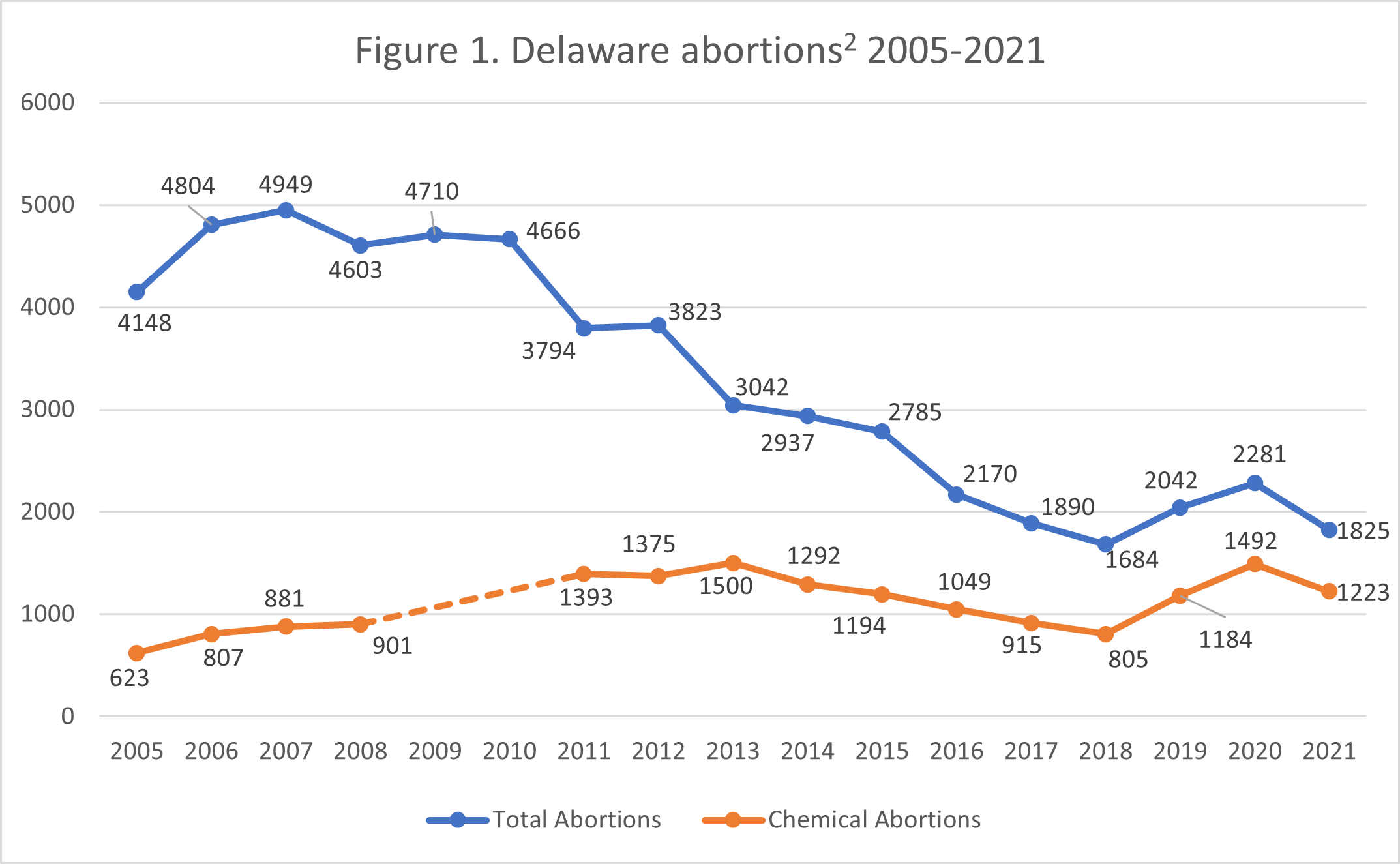
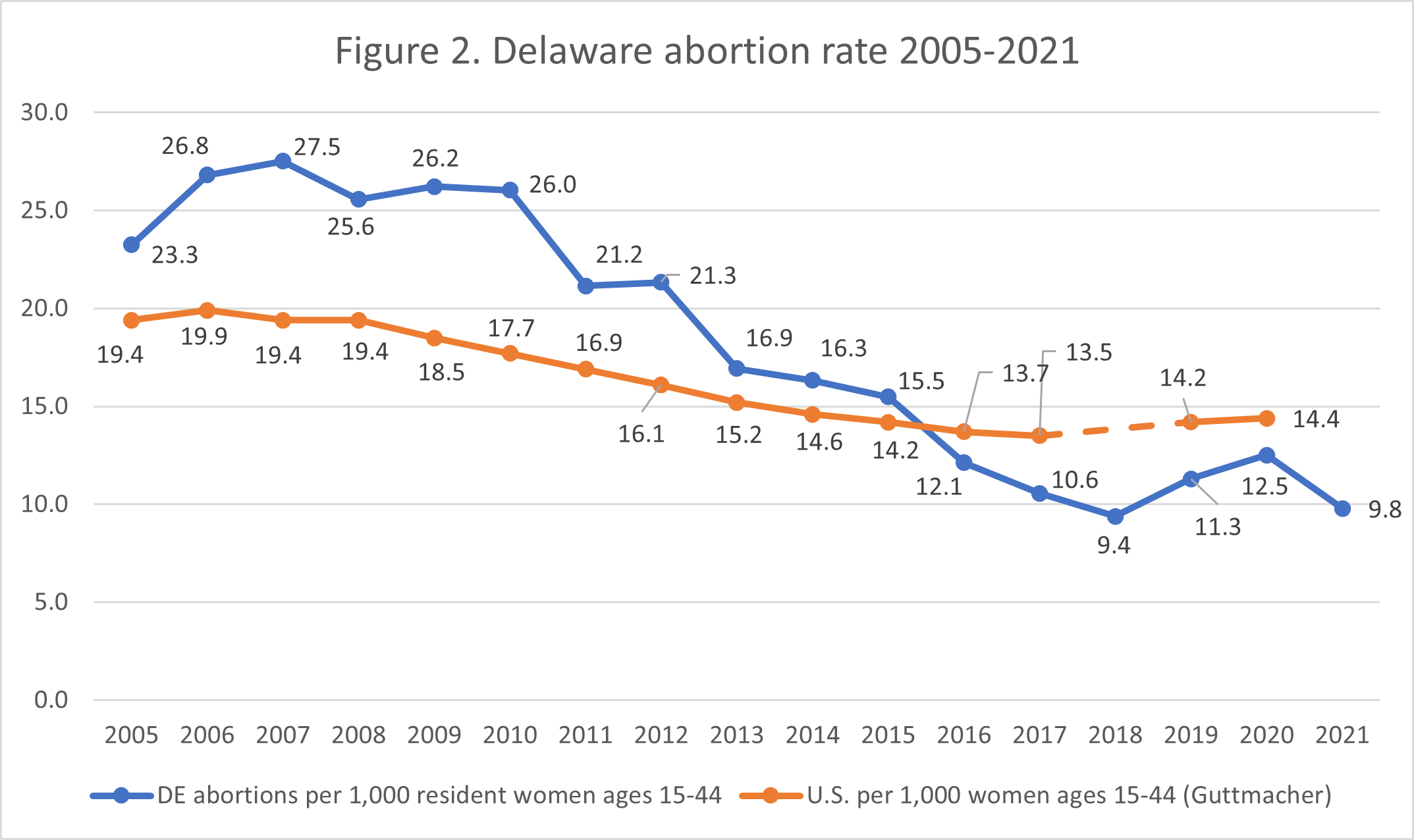
- National rates were calculated by the Guttmacher Institute. Delaware rates were calculated by CLI using the following formula: (total number of abortions performed in Delaware ÷ number of resident women ages 15-44 [based on most recent population estimates]) x 1,000. Rates may differ slightly from previous CLI articles due to revised population estimates. Population estimates were obtained from CDC WONDER. Estimates for 2005-2009 are intercensal estimates of the July 1 resident population. Estimates for 2010-2019 are Vintage 2020 postcensal estimates of the July 1 resident population. Estimates for 2020-2021 are Vintage 2021 postcensal estimates of the July 1 resident population. Population estimates were produced by the U.S. Census Bureau and the National Center for Health Statistics.
- Delaware did not report the number of chemical abortions performed in 2009 and 2010 in its state reports or in the data it shared with the CDC.











